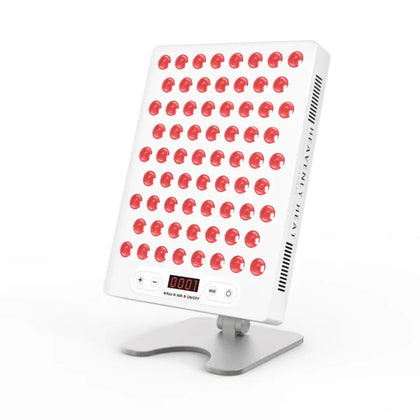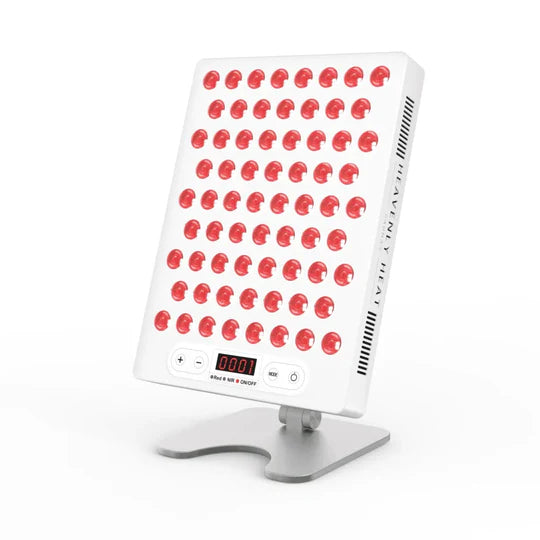The Benefits of Using a Sauna for Fibromyalgia Relief

Imagine a soothing experience that not only relaxes your body but also offers potential relief for persistent challenges.
If you live with fibromyalgia, you understand how unyielding chronic pain, fatigue, and "fibro fog" can be.
It’s not just discomfort; it’s a daily struggle that affects your life at every turn. Could a simple, natural approach help? Discover how sauna therapy may offer the soothing solution you need.
What is fibromyalgia disease?
"Coupled with fatigue, altered sleep patterns, memory problems, and mood swings, fibromyalgia is quite common as compared to rheumatoid arthritis and chronic fatigue syndrome," says Dr. Anjali Mukerjee, a renowned nutritionist and health expert.
Fibromyalgia is a long-lasting condition that causes pain all over the body, along with tiredness and trouble sleeping.
Experts at the National Institute of Arthritis and Musculoskeletal and Skin Diseases (NIAMS) explain that people with fibromyalgia feel pain more intensely than others.
While the exact reason for this condition is still a mystery, certain things can trigger or worsen it.
Here’s what might lead to fibromyalgia:
-
Family history: If close relatives have it, you might be more likely to get it.
-
Infections: Some illnesses can set off fibromyalgia or make symptoms worse.
-
Stress or trauma: A car accident or major stress can sometimes trigger it.
-
Other health problems: Conditions like arthritis or anxiety can increase your chances.
Living with fibromyalgia isn’t easy. Everyday tasks like working or spending time with family can feel exhausting.
But there’s hope. Regular gentle exercise like yoga or walking can help ease the pain. Managing stress through relaxation techniques or talking to a therapist can also make a big difference.
While there’s no cure yet, many people find ways to live full and happy lives with the right treatment and support.
What Do Studies Say About Sauna for Relieving Fibromyalgia Symptoms?
Yes, there are studies that say sauna therapy can help relieve fibromyalgia symptoms. Sauna sessions may ease pain, reduce stiffness, and improve overall quality of life for those dealing with this chronic condition.
For instance, a 2011 study published in Complementary Therapies in Clinical Practice combined sauna therapy with underwater exercises for 44 women with fibromyalgia.
After 12 weeks, participants reported pain and symptom reductions of 31–77% and noticed lasting benefits up to six months later.
To effectively relieve fibromyalgia symptoms, combining sauna therapy with gentle exercise is key.
Potential Benefits of Using a Sauna for Fibromyalgia Relief
Pain Reduction
- Living with fibromyalgia means dealing with pain all the time: People with fibromyalgia often feel pain every day, which makes even normal activities hard to manage.
- Sitting in a sauna can naturally ease that pain: Using a sauna helps reduce the pain without needing pills, by relaxing the body and calming the nerves.
- Just one week of sauna use showed big pain relief: In a study , people who used dry saunas regularly for a week felt a clear drop in their pain levels.
- Sauna sessions helped people feel better overall: Those using saunas not only had less pain but also felt better in their daily life, showing saunas can support both body and mind.
Improved Sleep
- Relaxing in a sauna helps calm the pain: The warmth of the sauna relaxes your muscles and eases tension, which helps reduce the overall pain caused by fibromyalgia. When your body feels calm, the pain doesn’t feel as overwhelming.
- Sleeping better at night makes pain easier to handle: According to a study , Fibromyalgia can make sleep feel impossible. But regular sauna use helps you sleep deeper and longer, and that extra rest gives your body strength to deal with pain more effectively the next day.
- Making sauna a habit helps your body recover: Using a sauna regularly can become part of your nightly routine. This consistency helps your body relax every evening, making it easier to manage pain and feel more refreshed in the morning.
Stress Relief
- Using a sauna helps take pressure off your mind: Fibromyalgia doesn’t just cause body pain, it brings mental stress too. Sitting in a warm sauna can help calm your thoughts and ease that constant pressure.
- The feeling after sauna and cold dips deeply relaxes you: A Japanese study looked at the “ totonou ” state, a special calm you feel after switching between hot saunas and cold water. This method brings a deep sense of peace.
- Sauna sessions make your brain feel sharper and happier: This relaxed state doesn’t just calm you, it also helps your brain work better and lifts your mood. That’s a big win for anyone feeling mentally drained.
- Relaxing in a sauna gives your body and mind a break: When your mind and body are constantly tense from fibromyalgia, a sauna offers a peaceful escape. This break from stress can make symptoms feel a little lighter.
Improved Circulation
- Better blood flow helps reduce fibromyalgia pain: Better circulation can make a world of difference for those with fibromyalgia, as it helps deliver oxygen and nutrients to muscles and tissues, easing discomfort.
- Sauna heat pushes the heart to pump more blood: Saunas naturally boost circulation by increasing heart rate and blood flow while also encouraging the body to cool itself through sweating .
- Using a sauna feels like light exercise for your heart: A study showed that regular sauna use mimics the effects of moderate exercise, enhancing blood flow and supporting cardiovascular health.
- Good circulation brings relief and supports healing: This improved circulation can alleviate fibromyalgia symptoms and promote overall wellness.
Support for Immune System Function
Fibromyalgia often comes with a weakened immune system, leaving you vulnerable to illness.
Sauna therapy can strengthen your immune response, providing the extra support your body needs.
A 2023 study revealed that a series of sauna sessions activated key immune markers like lymphocytes and immunoglobulins, which play a critical role in defending against infections.
Potential Reduction in Inflammation
- Inflammation makes fibromyalgia symptoms worse: When your body has more inflammation, you’re likely to feel more pain, stiffness, and discomfort from fibromyalgia.
- Sitting in a sauna may help calm down inflammation: Using a sauna regularly has been shown to lower markers like C-reactive protein , which tells us how much inflammation is in the body.
- People who use saunas often have less inflammation: A study from 2018 showed that those who used saunas frequently had much lower levels of inflammation compared to others.
- Less inflammation can make fibromyalgia easier to live with: When inflammation goes down, symptoms like pain and stiffness may become easier to manage, which can help improve your daily comfort.
Endorphin Production for Pain Relief
- Heat from the sauna makes your body release natural painkillers: When you're in a sauna, your body reacts to the heat by producing endorphins, chemicals that naturally relieve pain. This is very helpful for people with fibromyalgia, who often have fewer endorphins to begin with.
- Good blood flow from heat helps trigger these pain-fighting endorphins: The warmth from the sauna boosts your circulation and activates your nervous system. This combination leads to a strong release of endorphins, which can reduce the feeling of pain in your body.
- Using a sauna regularly helps keep endorphin levels up: It's not just a one-time fix. When you use a sauna often, your body may learn to keep endorphin levels higher over time. That means more consistent pain relief for those living with fibromyalgia.
- More endorphins mean you feel happier and less stressed: Endorphins don’t just fight pain—they also lift your mood and help you relax. This is important because stress and low mood can make fibromyalgia symptoms feel worse.
- A natural way to manage fibromyalgia symptoms without medicine: Because sauna therapy helps your body make its own pain relief chemicals, it’s a safe and natural way to feel better. For people with fibromyalgia, this makes sauna use a powerful part of managing daily symptoms.
| Study | Participants | Duration | Key Findings |
| 2011 Study (Complementary Therapies in Clinical Practice) | 44 women with fibromyalgia | 12 weeks | Pain reduction of 31–77%, lasting benefits up to 6 months |
| Dry Sauna Therapy Study | Fibromyalgia patients | 1 week | Significant reduction in pain scores, improved well-being |
| 2023 Sauna & Immune Function Study | General participants | Multiple sessions | Increased immune markers (lymphocytes, immunoglobulins) |
Other Therapies that help with Fibromyalgia
Acupuncture
Another therapy that may help with fibromyalgia is acupuncture. It works by gently placing thin needles on specific points of the body to help improve blood flow, relax the nervous system, and reduce pain.
Many people say it helps them feel less achy, sleep better, and have more energy. To explore this, a study in China is testing how well acupuncture works for fibromyalgia.
In the trial, 68 patients are getting real or fake acupuncture for eight weeks, with check-ins every month. Researchers are looking at pain, sleep, fatigue, and mood. The goal is to see if acupuncture can truly make life easier for people with fibromyalgia.
Massage therapy
Massage therapy works by relaxing tight muscles, improving blood flow, and calming the body’s stress response, things that really help when you’re dealing with fibromyalgia.
According to the National Library of Medicine , people who got a massage for at least five weeks felt less pain, anxiety, and depression. That’s real relief, backed by science and worth trying.
Comparing Sauna Therapy to Other Fibromyalgia Treatments
- Sauna helps relieve pain without needing pills: Sauna therapy offers a natural way to ease fibromyalgia pain without the side effects that often come with medication. Painkillers may give quick results, but saunas help your body relax and heal gently over time.
- You don’t have to work hard to feel better in a sauna: Unlike physical therapy, which needs regular effort and movement, sauna therapy is effortless. Just sitting in the warmth helps improve blood circulation and relax muscles, making it easier for those who struggle with daily exercise.
- Sauna gives relief to your whole body, not just one spot: Acupuncture works on specific points in the body, but sauna therapy provides overall relaxation. The heat covers the entire body, making it a more complete form of pain relief.
- Regular sauna use may give longer-lasting results: Some treatments only help for a short time, but using a sauna regularly can lead to steady and lasting improvement. It becomes part of a long-term healing routine instead of a quick fix.
- Sauna therapy eases both pain and stress together: CBT focuses on managing thoughts and emotions, but sauna therapy gives you direct pain relief while also calming your mind. It’s a physical and mental stress reliever at the same time.












































